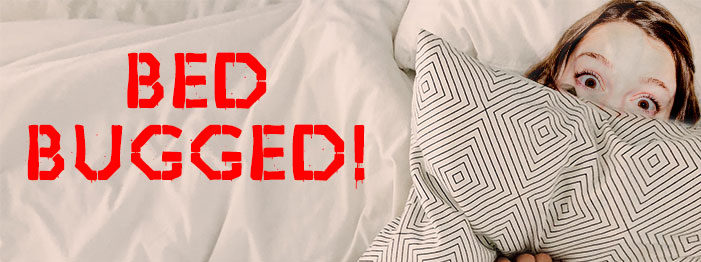
Cockroaches and bedbugs are some of the insects with the worst reputation. Often associated with poor hygiene and lower income houses, bed bugs get a bad rep, as do those unfortunate people who end up sharing their homes with them.
The Attack of the Bed Bug
Throughout Canada and particularly in the Ontario region where bed bugs are reaching epidemic proportions, significant steps are being made to reduce the stigma surrounding these irritating insects. Working hand-in-hand with bed bug pest control services, certain cities are trying to get on top of a problem that’s been escalating since 2014.
Blushing with the Bed Bug
One of the worst-hit cities in the region, Hamilton, now has a six-point action plan in place to deal with the bed bug problem. According to the strategy’s manager, Terry Quinn, a large part of that plan is raising awareness and they are trying to make people realize that “Bed bugs can find anyone anywhere any time, so there is really no reason to be ashamed.”
Toronto Public Health manager Tracy Leach agrees and while bed bug infestations have decreased in the city since 2016, the high concentration of people means it’s difficult to control. According to Leach, “Bed bugs are not a reflection of sanitary conditions. (Unknowingly,) people move bed bugs from one place to another location in the city — that’s how they survive”.
The Travel Bug
The capacity of bed bugs to travel and adapt to new environments makes them one of the worst insect species to regulate. Two of the main instigators contributing to the movement of bed bugs across Ontario are travel and the second-hand furniture trade.
The Hidden Hitchhiker
Jetting off to faraway places is a great way to spend your vacation time, but it does increase the challenge for bed bug pest control experts. Bed bugs got bitten by the travel bug long before us humans and have been travelling the world freely for decades, hitchhiking all over the world on unsuspecting hosts.
The Stowaways
Buying second-hand furniture makes sense on several levels, saving money and reducing waste. Unfortunately, it’s also one of the most popular ways for bed bugs to travel and find new environments in which to flourish. It’s not only beds that they’ll hide in either, as they are just as likely to be found in wardrobes, sofas and bedside tables.
Biting Back: Eradicating Bed Bugs
One of the most obvious signs that you’re sharing your home with bed bugs is the small, itchy bites they leave on your skin after engorging themselves on your blood. Active at night, these insects are attracted by your body temperature, the carbon dioxide you exhale and by your scent. Sometimes, bites go unnoticed for up to 14 days, giving the little critters plenty of time to settle in and start a family.
Since bed bugs are attracted to your body odours, having dirty laundry lying around is a surefire way of encouraging them. Unfortunately, this problem is often exacerbated when people travel, as many bring home a suitcase full of dirty clothes.
To help reduce the possibility of hidden hitchhikers in your dirty laundry, firstly, don’t dump your suitcase on the bed when you get home. Rather put it outdoors or in a designated laundry room before giving it all a good wash and, if possible, a 30-minute spin dry at 120-125F.
Although this will help prevent holiday hitchhikers from moving in with you, it won’t be sufficient to eradicate an established infestation. Getting rid of bed bugs is difficult and time-consuming so calling a bed bug pest control expert is highly recommended. Not only are they thorough, they’re also efficient and will save you a lot of time in the long run.